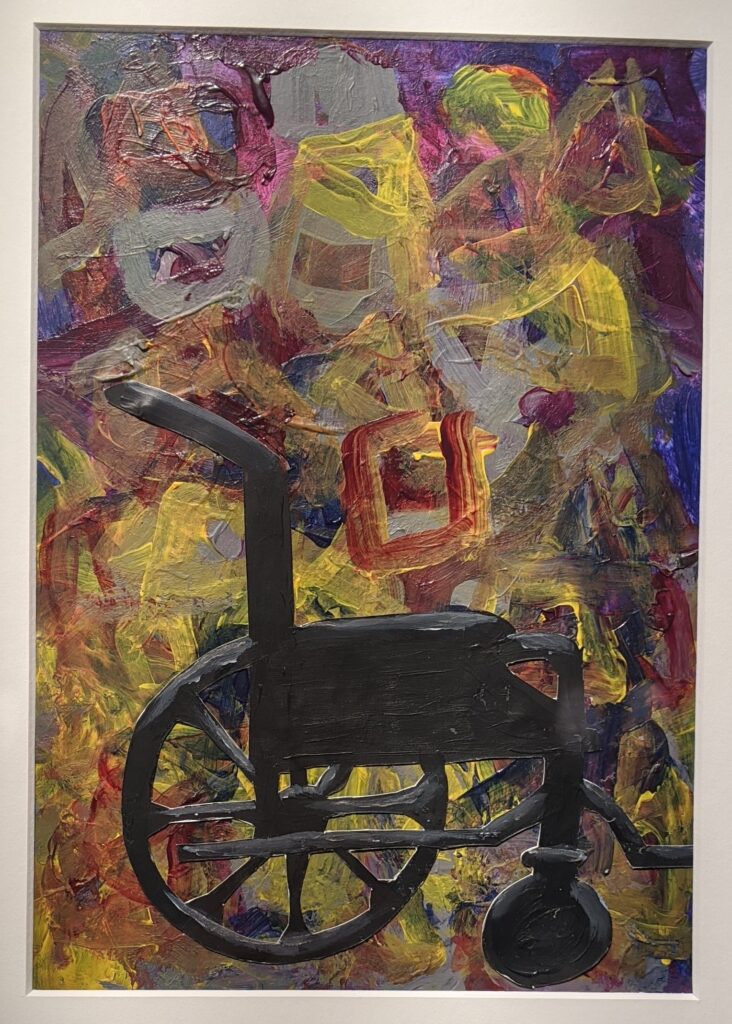“The Chair Is Not Me” Exhibition

From January 14th to February 28th an art exhibition entitled The Chair is Not Me is on display in the First Bank & Trust Gallery on the second floor of the Karl E. Mundt Library. The exhibition includes 11 pieces of poetry written by James Janis “JJ.” There is also artwork to accompany the poetry; the artwork was created by eleven diversely abled artists.
JJ grew up between the Pine Ridge Indian Reservation and Rapid City, South Dakota. JJ was born with cerebral palsy and other complicated conditions. As a result, he was expected to live no more than 12 hours—he has survived beyond these complications for 60 years. JJ believes that writing is one of the things that sets him free and apart from his disabilities and allows him to escape. The eleven poems and accompanying pieces of art were deeply emotional and personal. Some of them were about JJ’s disabilities, others his heritage, and a few were about his struggles.
One student who viewed the exhibition, Gabriel Simao, said that his favorite piece was “Walking Pharmacy.” “I really like the rhythm of the poem. It’s also realistic and emotional, in a way it speaks to everyone about the struggles we face in adulthood.” Simao also enjoyed the artwork illustrated alongside the piece, “I like [its] minimalism and that you can clearly see its connection the poem. To me, it looks like there are two people clearly illustrated, but after looking at the piece for a little longer they kind of fade and blend into the rest of the picture.” The illustration for “Walking Pharmacy” was composed by Barbara Heagy who often works with intricate shapes and colors.
The titular poem of the exhibit, “The Chair is Not Me,” was one of the most personal in the collection. It follows JJ’s struggles to be seen as more than someone in a wheelchair. It portrays raw emotion and frustration well. The artwork, created by Hoksila Long and Shawn Stratton, depicts a sort of chaos and frustration shown in the poem. There is also a large contrast between the chair and the background, further showing a divide between the subject of the poem and the poet himself.
I was moved the most by the poem titled “Flag-bearer.” It has vivid descriptions and imagery that help to illustrate how Native Americans suffered and how those from the reservation have been treated. It also details JJ’s experiences with the prejudice he faced as someone of Native American descent. The artwork is an illustration of a Native American flag-bearer who is carrying a flag of the Oglala Lakota tribe. The art piece is simple but emotional. I was instantly intrigued by the piece and the use of colors within it.
The goal of this exhibition is to “inspire people to think about, learn from, and connect to people who are diversely abled.” After viewing the collection, I believe that these pieces are capable of starting dialogues and communications that can help everyone learn a little more. The exhibition will be available to view in the First Bank and Trust Gallery until the end of February.













